Professional English
to Russian translation services
Scale your business across Russian-speaking markets with AI-powered English to Russian translation. From software interfaces to legal documents, Transifex delivers native-quality Russian localization that maintains your brand voice while meeting ISO standards for professional translation services.
Book your 30-min demo

Book your 30-min demo

Reach 260+ million Russian speakers with
AI-powered localization
Russian is the 8th most spoken language globally and the 2nd most used language on the internet, driving a $400 million translation market across Russia, Belarus, Kazakhstan, and Russian-speaking communities worldwide. Whether you're targeting Russia's 147 million consumers, expanding into CIS countries, or reaching Russian diaspora communities across Europe and North America, quality English to Russian translation directly impacts your market penetration and revenue growth in Russian-speaking markets.
Why translating from English to Russian is challenging
Converting English content to Russian involves navigating the complex Cyrillic alphabet, six grammatical cases, and cultural nuances that can significantly impact your message effectiveness in Russian-speaking markets.
Here's what makes professional Russian translation challenging:
Complex Cyrillic script and grammar
Russian uses a 33-letter Cyrillic alphabet with phonetics that differ from Latin scripts. Six grammatical cases change word endings, and nouns, pronouns, adjectives, and verbs all inflect by role. The language has no articles, making context key for accurate translation.
Regional market differences
Standard Russian is used in Russia, Belarus, Kazakhstan, and Kyrgyzstan, though vocabulary and cultural references vary across former Soviet regions. Business styles also differ between Russia and other CIS countries, and legal requirements vary by jurisdiction.
Cultural adaptation requirements
Russian business culture values directness and precision, with most consumers preferring straightforward communication. Formal address and hierarchy are important, and technical terminology requires deep subject knowledge. Cultural references and idioms must be localized for Russian audiences.
Technical localization challenges
Russian translations are often 10 to 20 percent shorter than English, though encoding must support Cyrillic in UTF-8. Input method compatibility is essential for software, and date formats and measurement systems must follow GOST standards.

Transifex is loved by leading organizations worldwide
Streamline English to Russian translation with Transifex
Whether you manage localization projects, develop software, or run marketing campaigns targeting Russian-speaking markets, Transifex streamlines your English to Russian translation workflow without compromising quality or cultural authenticity.
Here's what makes the difference:
AI that overcomes Cyrillic complexity
Transifex AI recognizes Russian (ru_RU) following ISO 639-1 and BCP 47 standards with full Unicode CLDR data for proper Cyrillic character handling. The system automatically adapts vocabulary, formality levels, and grammatical cases based on your target market—using appropriate business terminology for B2B communications while adapting to consumer-friendly language for marketing materials.
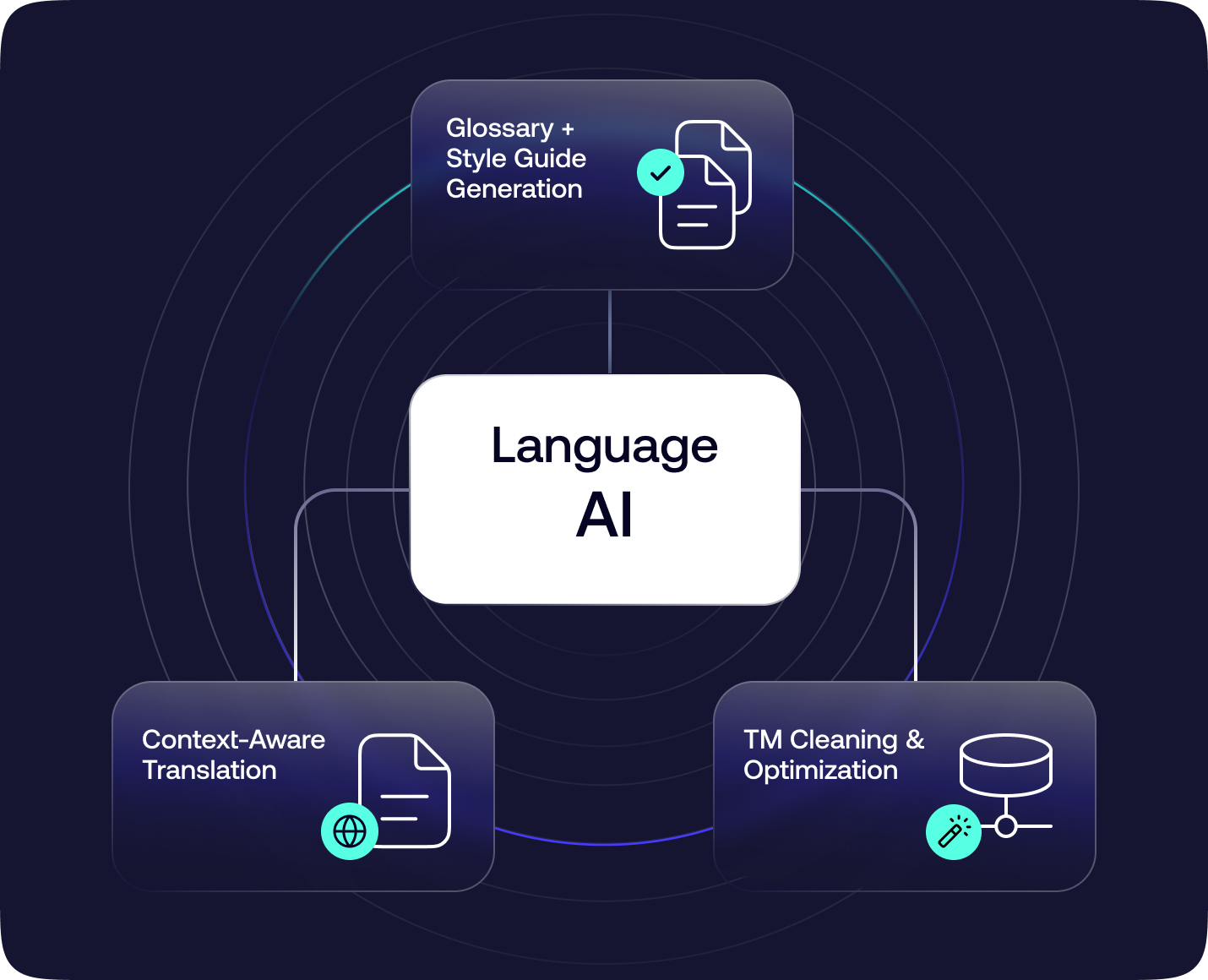
Translation Memory features
Every approved Russian translation builds your terminology database using ISO/IEC 15897 standards for locale handling. When you translate "customer support" once as "техническая поддержка," the system suggests it consistently across all Russian content while respecting grammatical case variations. Fuzzy matching identifies similar inflected forms to accelerate translations while maintaining linguistic accuracy.
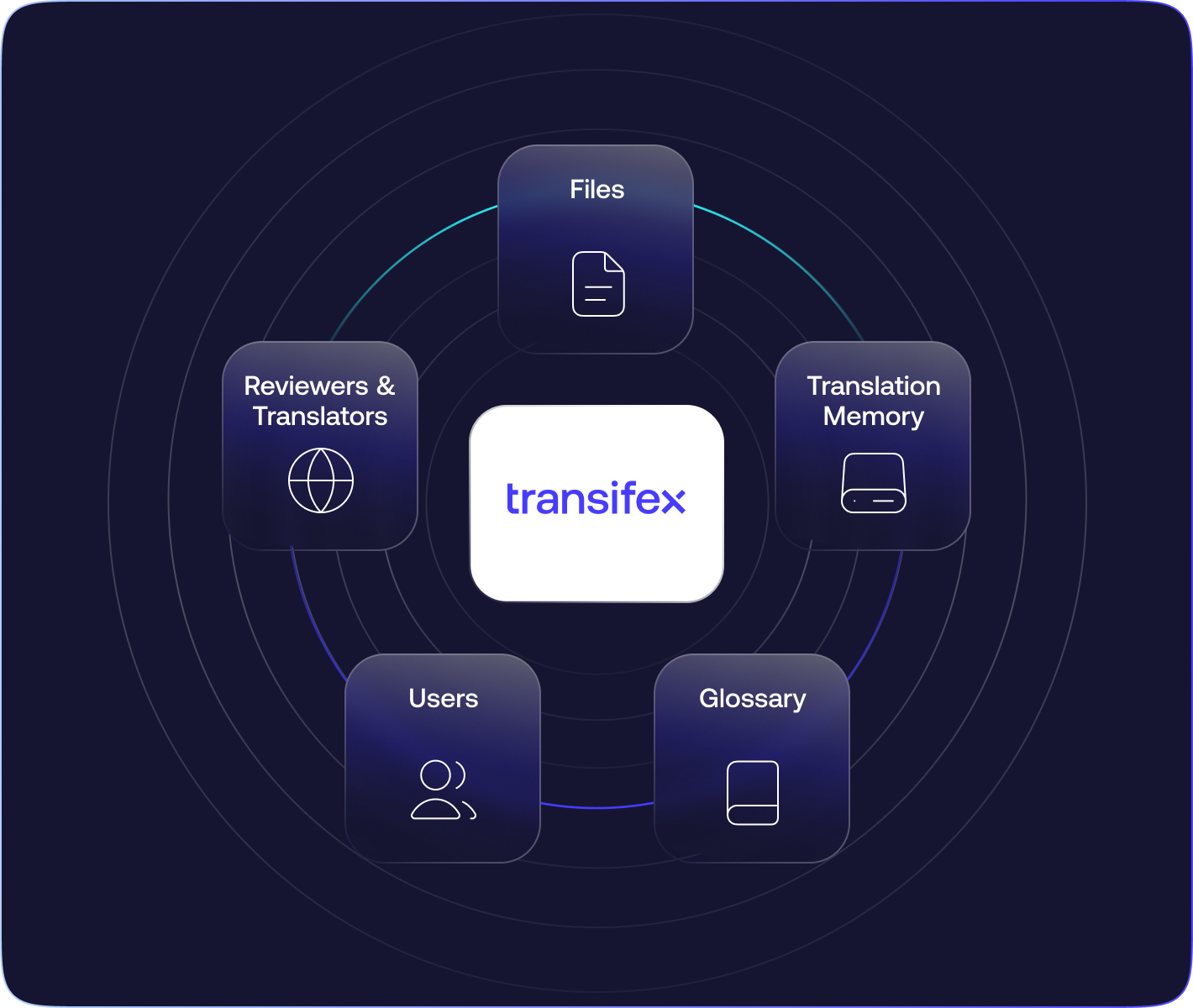
Quality scores you can trust
TQI (Translation Quality Index) automatically evaluates every Russian translation using three metrics: consistency across language models, structural integrity preserving HTML tags and Cyrillic encoding, and semantic accuracy. Set thresholds to auto-approve high-quality translations (85%+) while flagging complex Russian grammar issues for human review.
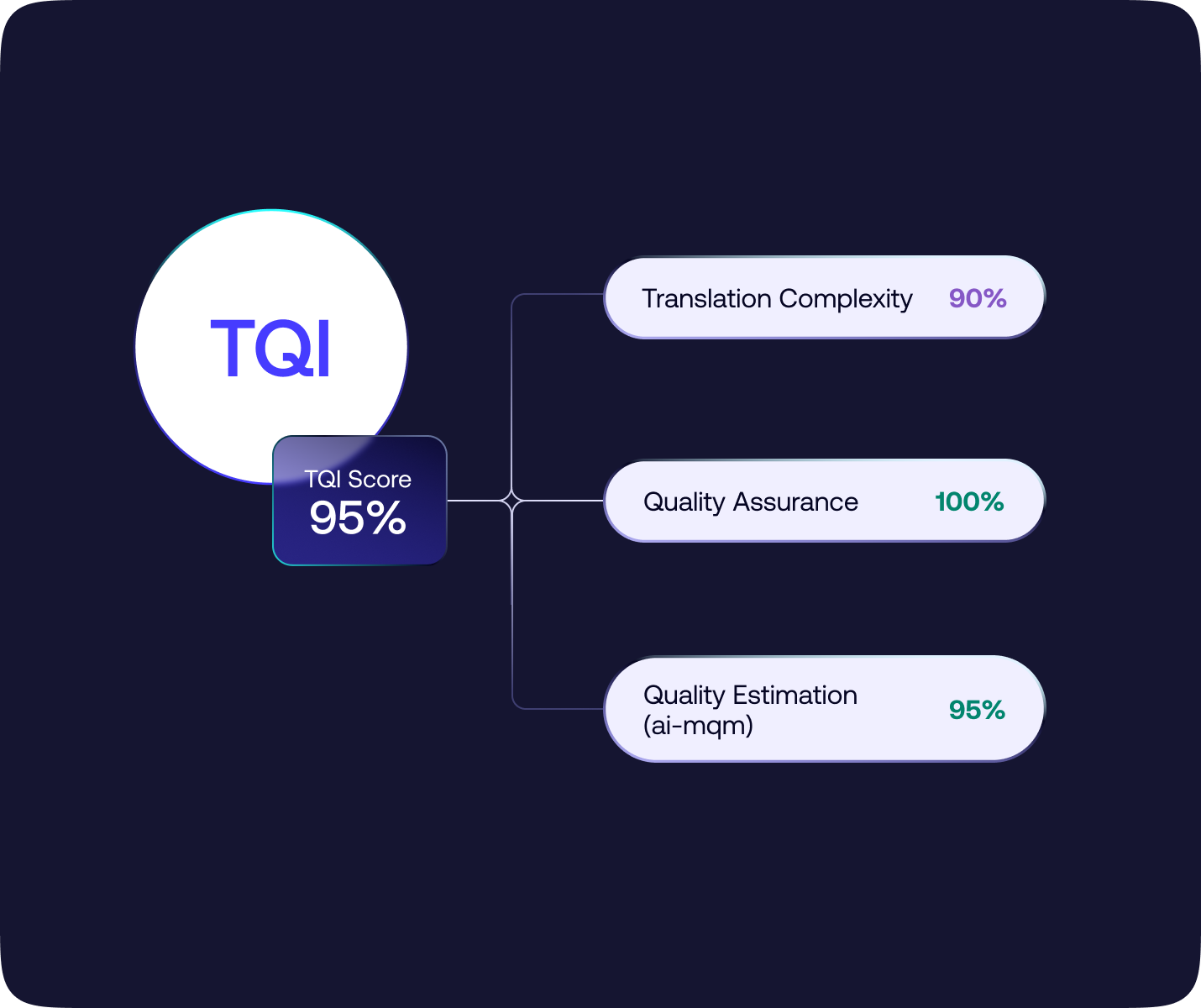
Live website translation
Install one JavaScript snippet and translate your website directly in the browser. See exactly how Russian text contraction affects buttons, menus, and content areas in real-time. Changes go live immediately without developer involvement—perfect for marketing campaigns targeting Russian-speaking markets across Eastern Europe and global diaspora communities.
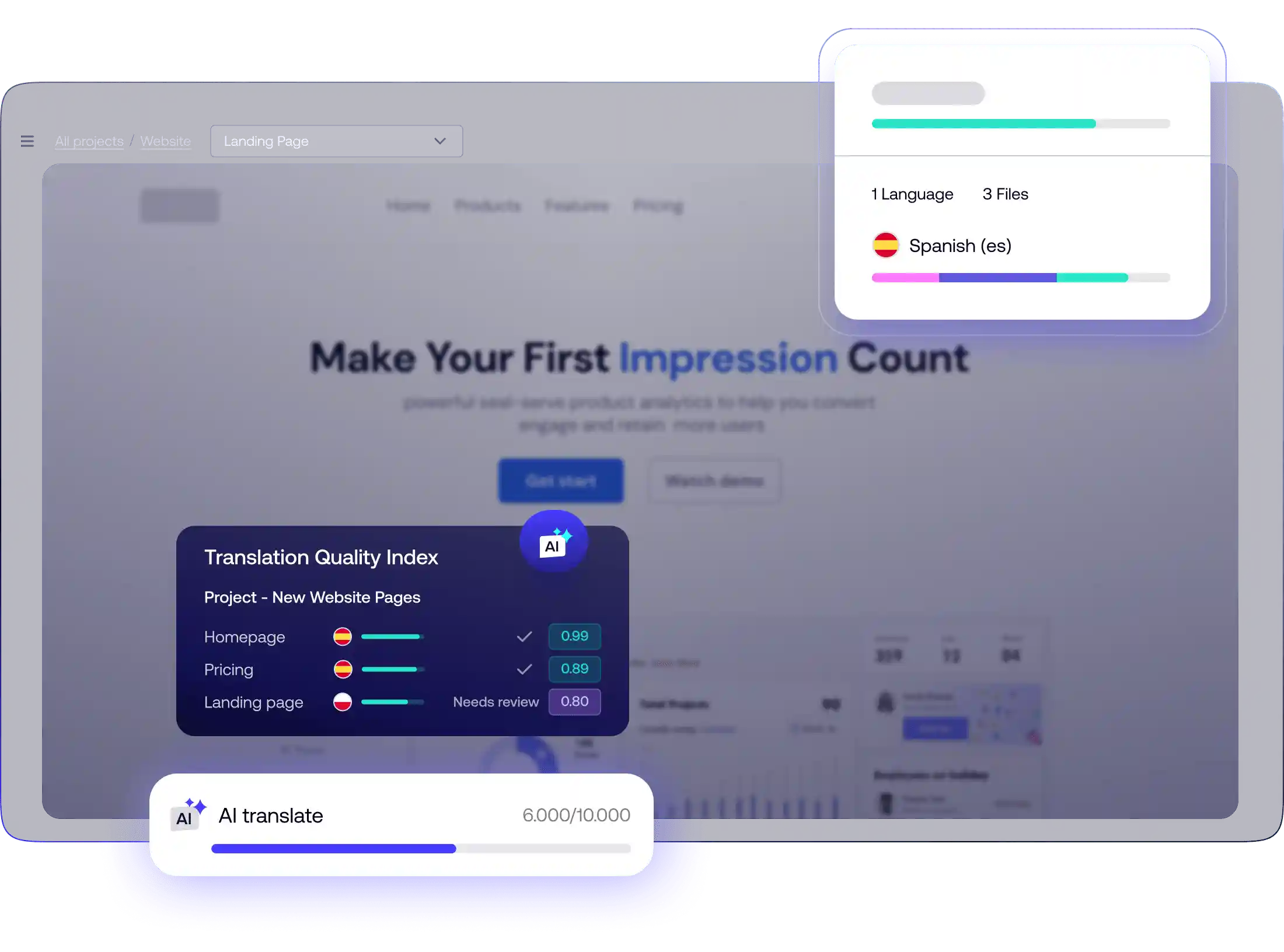




Built for product, marketing, and localization teams alike
Localization Managers
More efficiency, more localized Russian content
Localize more Russian content with less effort on an all-in-one platform. Bring all stakeholders together, streamline collaboration, and deliver authentic, on-brand Russian translations efficiently for every Russian-speaking market while maintaining ISO 17100:2015 quality standards.
Marketing Managers
Launch Russian campaigns faster
Create localized Russian content that matches your brand voice across Russia, CIS countries, and global Russian diaspora communities. With context-aware translations, marketing teams can move fast, stay consistent, and never miss a campaign window targeting Russian-speaking audiences—no dev help required.
Developers
Russian localization built for agile teams
Take Russian localization off your backlog with a platform built for high-frequency content updates. Seamlessly integrate into your CI/CD workflow using our extensive API, SDKs, and CLI tools with full ISO standard compliance for Russian locale handling and Cyrillic script support.
Product Teams
Launch Russia-ready products faster
Accelerate product launches with automated Russian localization. Integrate seamlessly into your development workflow and ensure your applications speak native Russian from day one with proper locale handling for Russian-speaking regions.
Transifex AI helps you master any language
Transifex supports over 450 language locales following ISO 639-1 standards, including Russian variants like ru_RU (Russia), ru_BY (Belarus), and ru_KZ (Kazakhstan). The AI recognizes when to use "компьютер" vs "ЭВМ" for computer, or appropriate formality levels depending on your specific Russian market context.
Transifex features designed for Russian localization excellence:
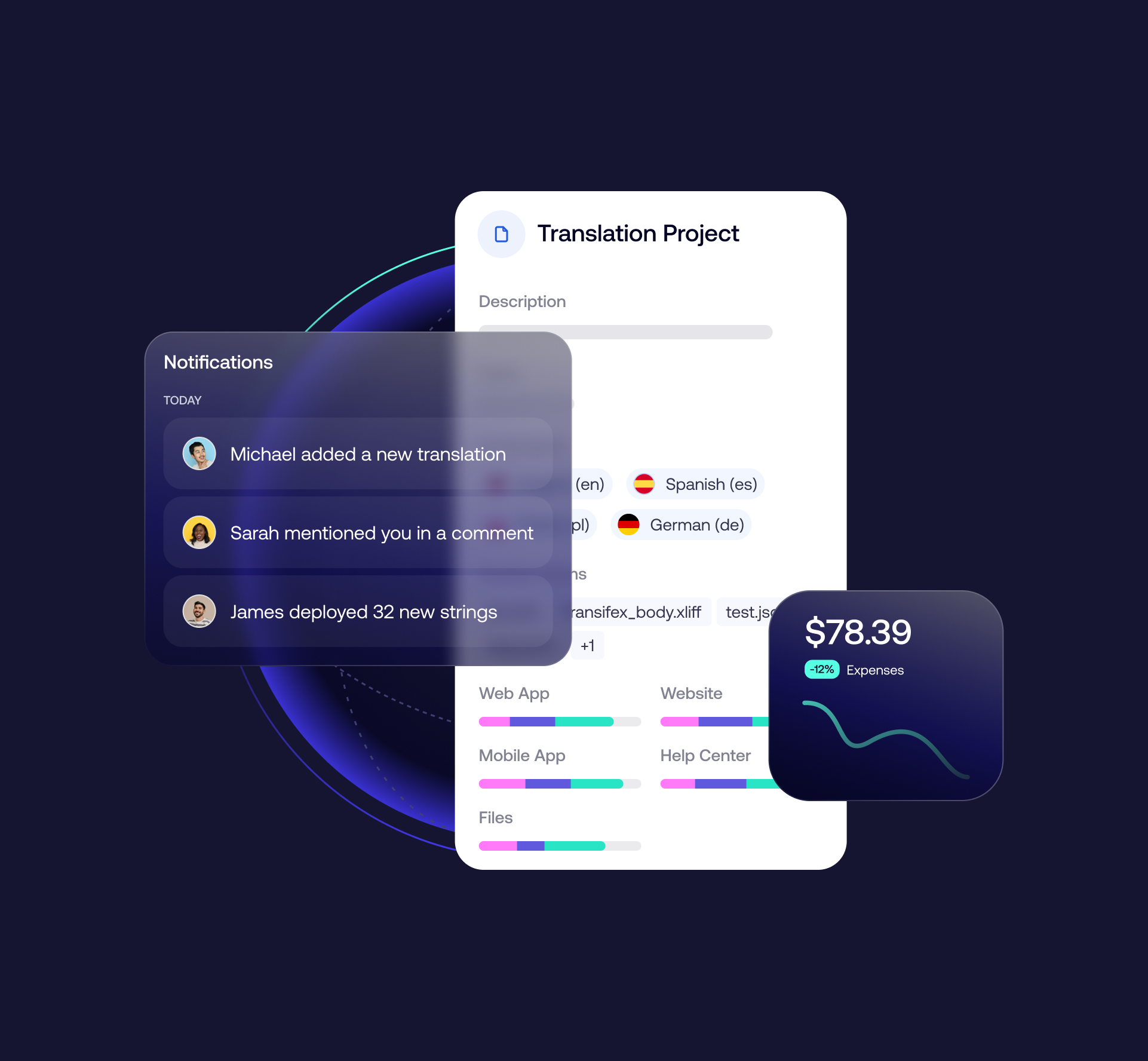
Complete project management
Set up automated workflows for Russian translation projects using Unicode CLDR data for proper Cyrillic character handling and grammatical case management. Configure TM fill-up to instantly apply 100% matches from your Russian translation memory. Enable AI fill-up to translate new content automatically while respecting Russian grammar complexity and cultural conventions. Assign roles to certified Russian translators, reviewers, and project managers with appropriate permissions for different Russian-speaking markets.
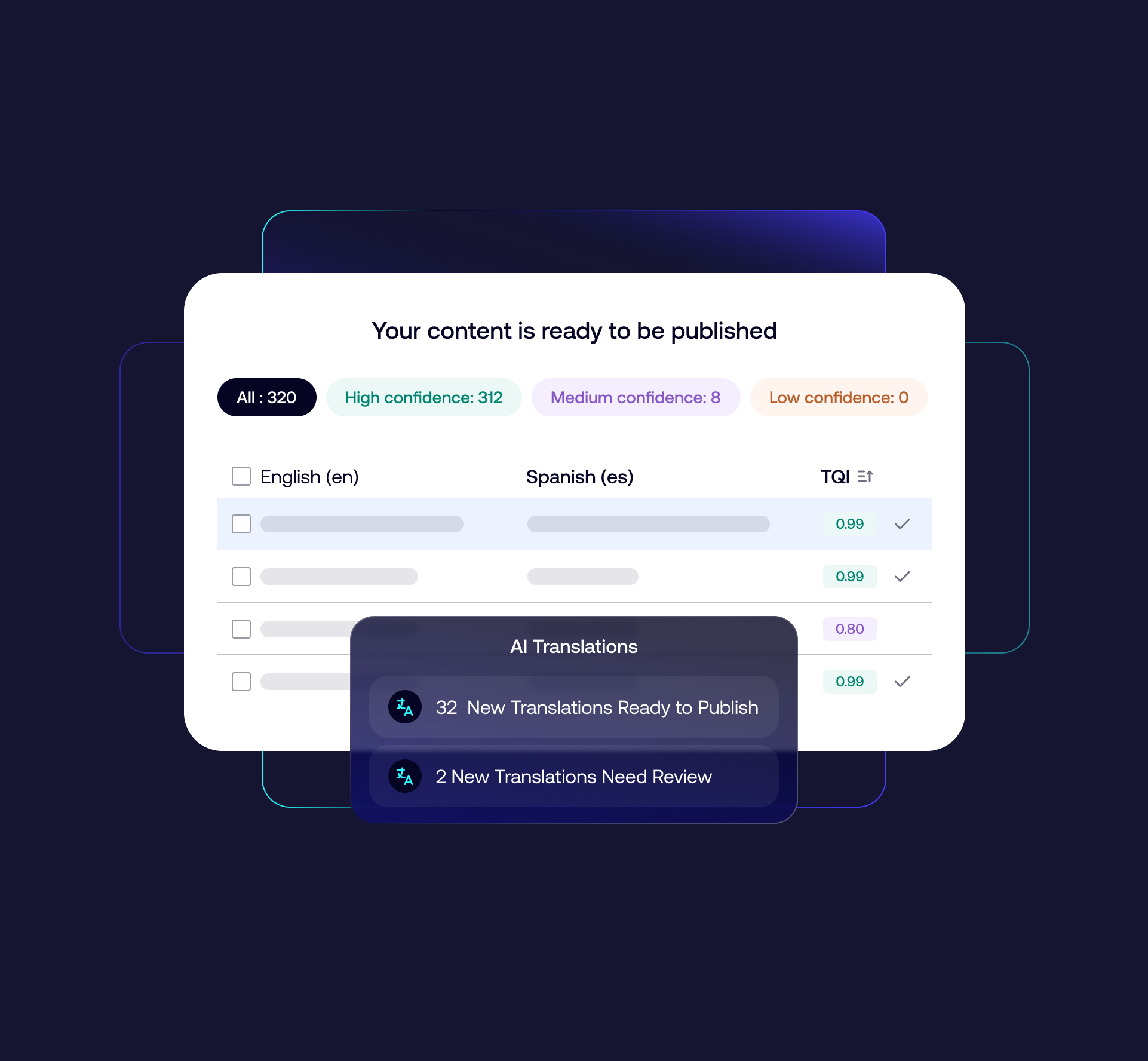
Context-aware AI translation
Transifex AI analyzes your Russian glossary for consistent terminology, references high-similarity translation memory entries, and follows your Russian style guide instructions. Whether you need formal business Russian for legal documents or conversational Russian for consumer marketing, the AI adapts accordingly while maintaining brand consistency across Russian-speaking regions.
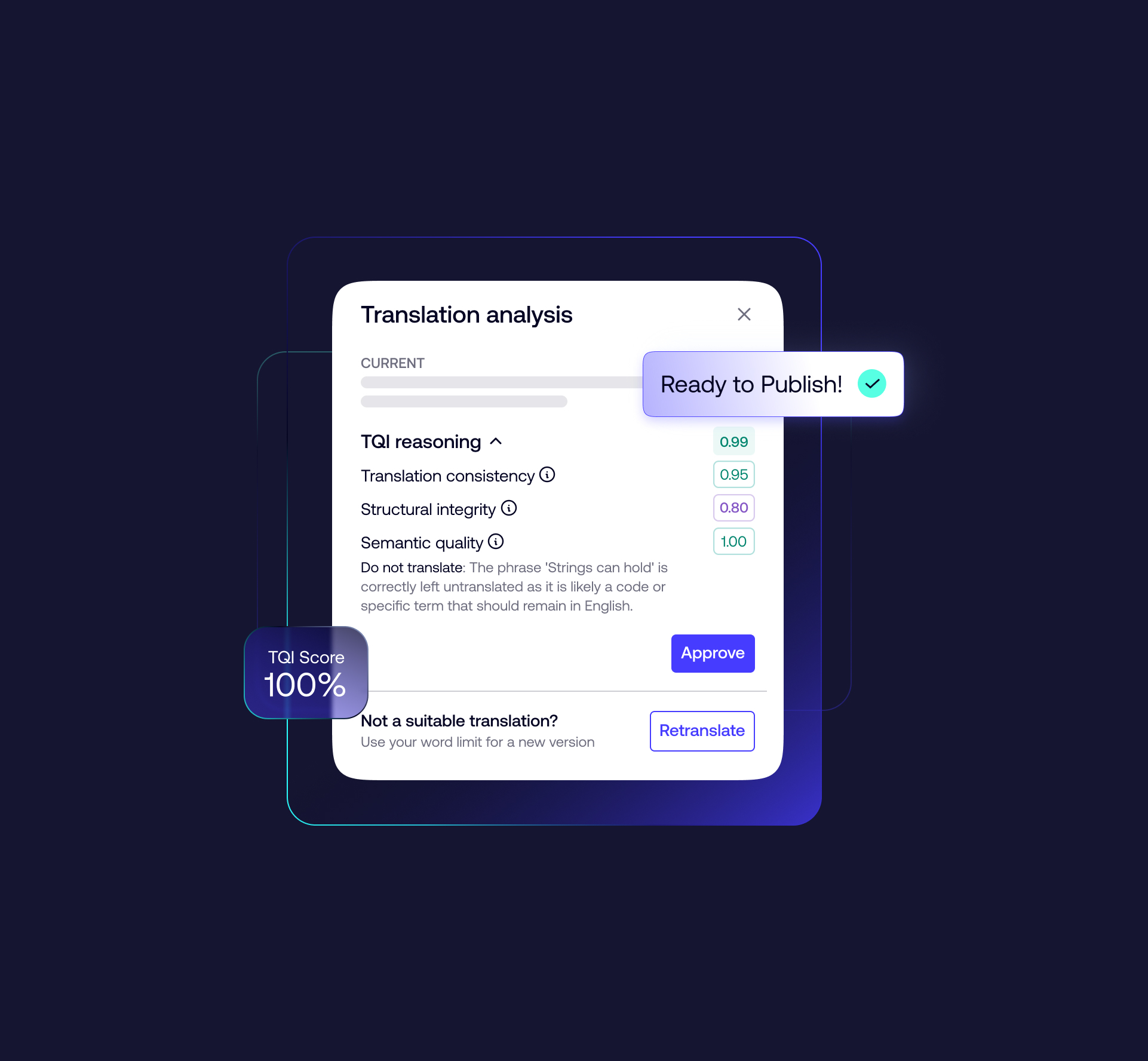
Automated quality control
TQI identifies specific issues like Russian grammar inconsistencies, Cyrillic encoding errors, or cultural appropriateness concerns for different Russian markets. Configure workflows to auto-approve high-scoring translations (85%+), route medium-scoring content for quick review by native Russian speakers, and flag low-scoring translations for comprehensive revision. Track quality trends to improve future Russian translations.
The only localization platform with native support for over 46 different content types
Translate any type of English content into Russian—no conversions or plugins needed.
Web and
mobile UI
YAML (.yaml/.yml), JSON (including structured JSON), Gettext PO/POT, Android XML, Apple .strings / .stringsdict—supports Russian Cyrillic encoding automatically
Technical documentation
Markdown (.md / .mdx), Wiki markup (.wiki), XLIFF (.xliff/.xlf/.xml)—perfect for Russian technical manuals and software documentation
Marketing
assets
PowerPoint (.pptx), HTML / XHTML, Landing pages—handles Russian cultural adaptation automatically
Fileless (API-based content)
Phrase-based localization from APIs, Figma plugin, HubSpot—uses ICU syntax, supports Russian metadata, and exports as JSON or XLIFF
Business and legal documents
Microsoft Word (.docx), Excel (.xlsx/.xlsm/.xltx/.xltm), PDF (via conversion)—ideal for Russian legal compliance and USCIS document requirements
Subtitles and video captions
SubRip (.srt), SubViewer (.sub), YouTube captions (.sbv), WebVTT (.vtt)—translated in-context with built-in editor preview for Russian voice-over projects

Scale Russian localization today
Transifex helps you translate English to Russian with speed, precision, and automation—all while maintaining brand consistency and cutting manual work.
Launch new content, reach Russian-speaking markets, and scale your multilingual strategy with confidence across Russia's $400 million translation market and global Russian communities.
Frequently asked English to Russian questions
Still got questions? Talk with the Transifex team to see how you can improve the quality of your Russian translations and save money.
How many people speak Russian globally?
Russian is spoken by approximately 260+ million people worldwide, including 147-155 million native speakers. It's the 8th most spoken language globally and the most geographically widespread language in Eurasia, with official status in Russia, Belarus, Kazakhstan, and Kyrgyzstan.
What makes Russian translation challenging compared to other languages?
Russian uses the 33-letter Cyrillic alphabet and has six grammatical cases that change word endings based on sentence structure. The highly inflected grammar system requires expert knowledge of Russian linguistics to maintain accuracy and cultural appropriateness in professional translations.
Why is Russian important for business expansion?
Russian represents access to a $400 million language services market and 260+ million potential consumers across Russia, CIS countries, and global diaspora communities. Russian is also the 2nd most used language on the internet, making it essential for digital marketing and e-commerce expansion.
How does Transifex handle Cyrillic script and Russian grammar complexity?
Transifex AI uses Unicode UTF-8 standards with full Cyrillic character support and understands Russian grammatical cases. The platform automatically handles inflected forms, maintains proper encoding, and provides TQI quality scoring specifically calibrated for Russian language complexity.
What industries benefit most from English to Russian translation?
Technology, legal services, medical/pharmaceutical, financial services, and manufacturing industries see significant benefits from Russian localization. Russia's strength in STEM fields and technical expertise creates opportunities across software localization, legal compliance, and business communications.
Can Transifex handle certified Russian translations for official use?
Transifex supports professional Russian translation workflows that meet ISO 17100:2015 standards. Our platform enables certified Russian translators to work with USCIS documents, legal contracts, and business materials while maintaining consistency and accuracy for Russian regulatory compliance.
How long does English to Russian translation take with Transifex?
Translation speed depends on content volume and complexity. Transifex AI provides instant Russian translations with TQI quality scoring, while human review processes can be automated based on quality thresholds. Most projects see 70% faster completion times compared to traditional workflows while maintaining native-level quality.
Learn more about scaling your software localization efforts
Software localization is more than the translation of your product UI. Different language settings, plural forms, frameworks used and visual relevancy factors are only a few other things to consider.




